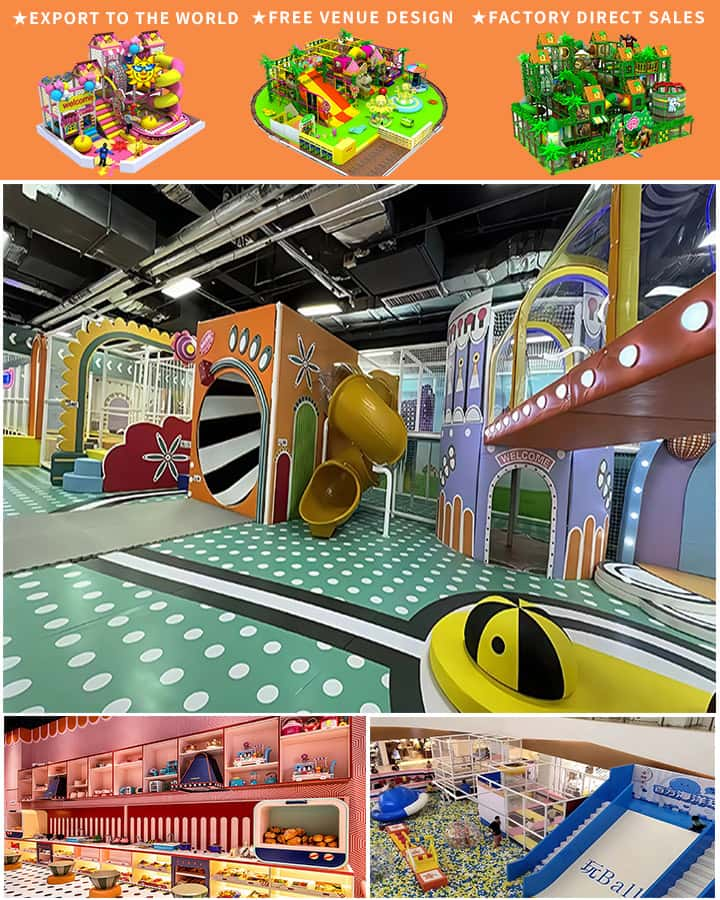In the hustle and bustle of modern life, finding ways to keep children entertained and engaged can be a challenge. One effective solution is to install soft play equipment in your home or backyard, creating a safe haven where kids can explore, learn, and burn off energy. This article explores the various types of soft play equipment available, their benefits, and tips on how to integrate them into your living space harmoniously.
Why Choose Soft Play Equipment?
Soft play equipment is designed with safety and fun in mind. Unlike traditional playgrounds that often feature hard surfaces and potential hazards, soft play equipment is crafted from materials that cushion falls, reduce injury risks, and provide a more enjoyable experience overall. This makes it an ideal choice for families with young children who need a secure environment to play in.
Types of Soft Play Equipment
Soft Play Mats: These are versatile pieces that can serve as the foundation for any indoor play area. They are made from foam or other cushioning materials and come in various sizes, colors, and shapes. Some mats even have interactive elements like numbers, letters, and shapes printed on them to aid in early learning.
Foam Blocks and Shapes: Lightweight and easy to arrange, foam blocks and shapes encourage creativity and motor skill development. Children can build towers, houses, and whatever their imagination conceives, promoting cognitive growth while having fun.
Play Structures: Miniature versions of slides, climbing frames, and tunnels can be installed in larger backyards or spacious rooms. These structures not only provide physical activity but also stimulate imaginative play. Look for options with safety features such as padded surfaces and rounded edges.

Trampolines: For families with a bit more space, a soft-sided trampoline can be a fantastic addition. It combines the thrill of jumping with the safety assurance that comes from its enclosed design, making it suitable for both indoor and outdoor use.
Sensory Walls: Designed to engage multiple senses simultaneously, sensory walls often include textures, mirrors, buttons, and lights. They offer tactile and visual stimulation, helping to develop fine motor skills and sensory processing abilities.
Benefits Beyond Fun
The advantages of incorporating soft play equipment into your home extend beyond simple entertainment. Here are some key benefits:
Motor Skill Development: Climbing, crawling, and balancing activities enhance gross motor skills, which are crucial for overall physical development.
Cognitive Growth: Interactive elements like puzzle pieces and educational mats foster problem-solving skills and early learning.
Emotional Wellbeing: A dedicated play area can serve as a stress reliever for children, offering a space where they feel comfortable expressing themselves.
Socialization: Soft play areas can become gathering spots for playdates, encouraging social interaction and teamwork among children.
Designing Your Perfect Play Space
When designing a soft play area at home, consider the following tips:
Safety First: Ensure all equipment meets safety standards and is appropriate for your child’s age group. Non-toxic materials are a must.
Space Management: Measure your available space carefully before purchasing to ensure everything fits comfortably without overcrowding.
Multi-Functionality: Opt for items that serve multiple purposes, such as storage cubbies integrated into climbing structures or mats that double as seating areas.
Personalization: Involve your child in the selection process to cater to their interests and preferences. Personalized spaces are more engaging for children.
Conclusion
Transforming a corner of your home or backyard into a soft play paradise offers endless opportunities for fun, learning, and growth. By carefully selecting the right mix of equipment and considering safety and design principles, you can create a space where your child’s imagination can soar while ensuring their wellbeing. Remember, the ultimate goal is to craft an environment that nurtures happiness, health, and development – one soft landing at a time.




